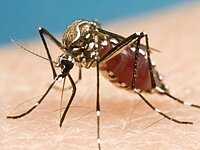Natural Asset Management Update - February 2017
By: Regional Natural Asset Management Coordinator, Travis Sydes...
Wet Tropics Major Integrated Project
You will soon be hearing the WT MIP acronym bandied about, especially in the Cassowary Coast Region, as a significant investment in water quality improvement rolls out in one of Queensland Great Barrier Reef pollutant hotspots. Focusing on the catchments of the Tully and Johnstone Rivers the Department of Environment and Heritage Protection (DEHP) funded project has contracted a consortium coordinated by Terrain NRM to work with industry, landholders and communities to design and implement a major integrated project (MIP). The project will be delivered in two stages with project planning occurring from now till mid-year; and implementation following on out to 2020. The consortium approach as well as the upfront investment in regionally tailored project planning is a refreshing acknowledgement of ground up implementation and a unique opportunity for the region (one which we will share with the other project in the Burdekin).
‘The objective of the WTMIP is to work closely with groups of landholders in one or two focus areas (within the Tully and Johnstone catchments) to trial a range of regionally tailored, coordinated actions that reduce nutrient and pesticide loads. Throughout this WTMIP, progress in achieving land management practice changes, economic benefits for landholders and pollutant load reductions will be closely monitored and results will inform adaptive management. By concentrating effort into one or two areas and closely involving landholders in the design and implementation of this WTMIP, we aim to achieve a steeper trajectory in water quality improvement than would otherwise occur.’ Terrain NRM project brief.
The project will focus on three target areas; cane industry; sugar industry and systems repair.
For more information go to http://www.terrain.org.au/Projects/Wet-Tropics-Major-Integrated-Project
Wet Tropics Healthy Waterways Pilot Report Card launched
In other water quality happenings the long anticipated report card for the Wet Tropics region was released at the end of last year. The partnership which has authored this first report is made up of 19 organisations from across the region. The report card provides a summary of the condition of freshwater, estuarine and marine environments from the Daintree to the Herbert. More detail on the individual elements of the report card is available online.
Main findings from the Wet Tropics pilot report card are:
- The majority of Wet Tropics waterways are graded as ‘moderate’ for 2014/15, indicating that there is room for improvement.
- A number of scientific monitoring data gaps have been identified, which the Partnership is seeking to address for future report cards.
- The grades need to be viewed in context, for example:
- The reporting period 2014/15 was a very low rainfall year, which can result in better basin water quality scores compared to wetter years. Reduced rainfall can lead to lower runoff and erosion as well as reduced nutrient and pesticide mobilisation from the soils.
- Freshwater grades are lower largely due to historic loss of wetlands.
- Estuary habitat and hydrology grades are lower due to historic loss of riparian, mangrove and saltmarsh extent.
- Inshore marine grades are lower due to seagrass decline as a result of regional climate patterns compounded by recent cyclones and storm events
The report card also delves into the social and economic condition of the region in relation to the reef and our catchments
The report card will be produced annually to provide a region wide and in depth snap shot of the health of the Great Barrier Reef and our waterways.
To view and download a full copy of the Wet Tropics Pilot Report Card and for further details on the breakdown of results go to www.wettropicswaterways.org.au
Cassowary Coast mozzies in the firing line in game changing research
Councils have played an important role in vector control programs for many years. Control programs have evolved to target not only nuisance mosquito populations but also to reduce the risk of transmission of a range of diseases for which vaccines don’t exist, such as dengue. Councils are reliant on pesticide application in areas where mozzies congregate which have a range of inherent risks.
A new international collaboration which plans to field trial sterile insect technology (SIT) in the Innisfail area has potential to be a global game changer for the management of mosquito borne diseases. The project is a partnership between Verily Life Sciences (an Alphabet company and Google affiliate) and CSIRO and is targeting the management of the dengue mosquito (Aedes aegypti) using a naturally occurring bacteria called Wolbachia which sterilises mosquitoes (the eggs laid by an infected female will not hatch). Many will be familiar with the use of Wolbachia to manage Dengue Fever in the Eliminate Dengue Program which has been carrying out trials of its method in Queensland since 2011. The Eliminate Dengue Program aims to replace the mozzie population with mosquitoes which cannot transmit disease. This method releases both male (non-biting) and female (biting) mossies infected with the Wolbachia bacteria. The bacterium prevents the virus growing inside the mosquito and the result is a mozzie which may still bite you, but is less likely to transmit dengue to you if it has previously bitten a person with dengue.
The CSIRO method aims to remove the mosquitoes by releasing only the non-biting, Wolbachia infected, and now sterile males. The males seek out the females, they mate, and their eggs don’t hatch. Sounds simple enough and the small-scale lab-based processes which have manually developed the concept show it works. The challenge is the development of the technology and tools which can do this on scale which makes it effective in the real world; and knowing exactly what an unsupervised male mosquito gets up to in his 3 days of life. This is where the high tech skills of Verily have come on board. They are developing the automation of the raising, sexing, sorting, sterilising, and release of the tweaked males into the wild population. A process they quite accurately describe as a mosquito breeding robot. Coupled with the detailed population data from local CSIRO field teams the end game is to ultimately eliminate the mosquito, and therefore the disease.

We have always known that Aedes aegypti are closely linked to human settlement and love to live up close and personal. The new SIT method on trial is target specific meaning that our many native, non-disease carrying and actually beneficial mozzies (pollinators and prey) are spared; and the Aedes aegypti which has few, if any, redeeming features (and is an introduced pest to boot) may just be eliminated.
For more information go to Verily’s landing page and video or CSIRO’s Innisfail Project or Eliminate Dengue


